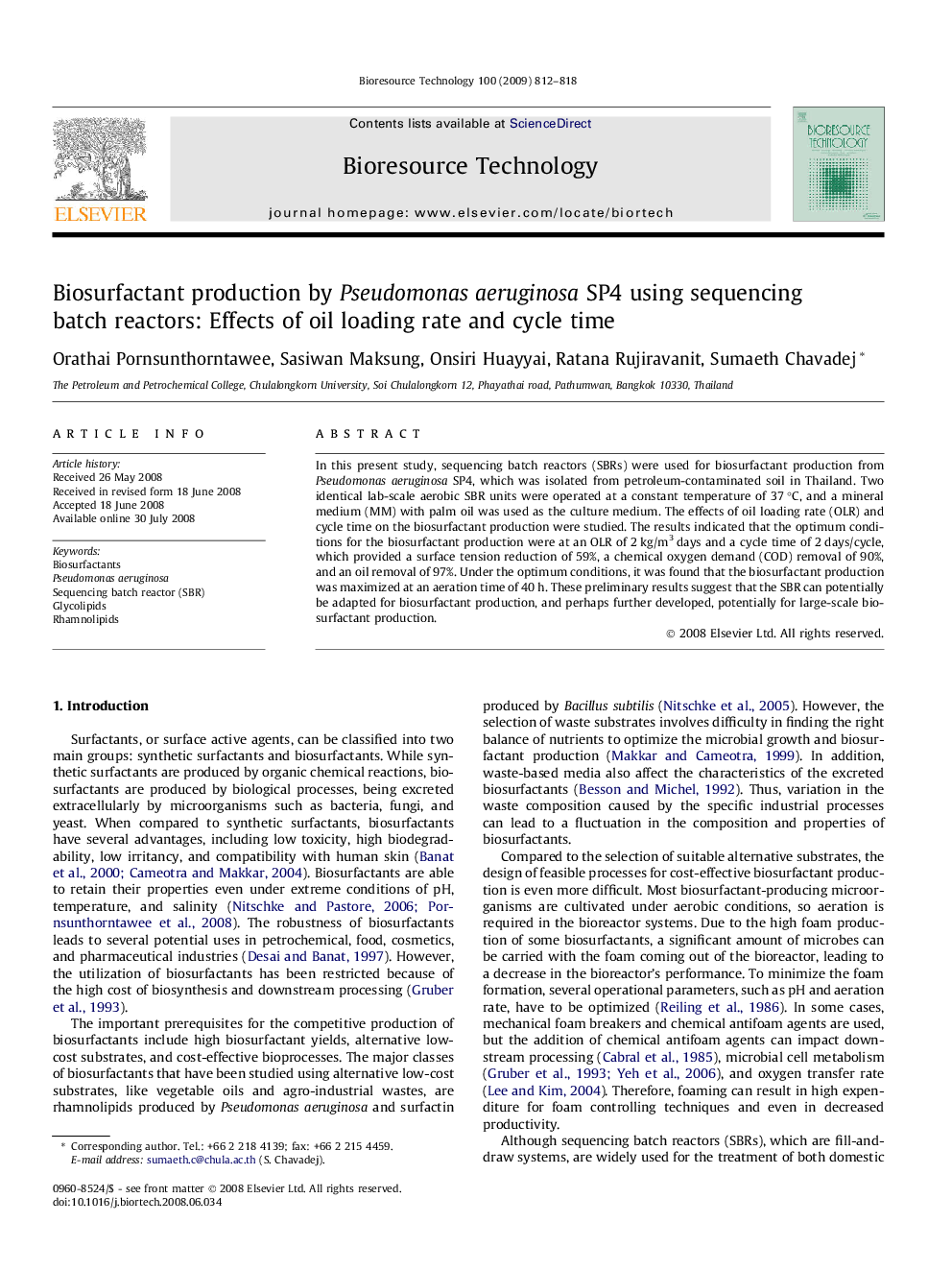| Article ID | Journal | Published Year | Pages | File Type |
|---|---|---|---|---|
| 683763 | Bioresource Technology | 2009 | 7 Pages |
In this present study, sequencing batch reactors (SBRs) were used for biosurfactant production from Pseudomonasaeruginosa SP4, which was isolated from petroleum-contaminated soil in Thailand. Two identical lab-scale aerobic SBR units were operated at a constant temperature of 37 °C, and a mineral medium (MM) with palm oil was used as the culture medium. The effects of oil loading rate (OLR) and cycle time on the biosurfactant production were studied. The results indicated that the optimum conditions for the biosurfactant production were at an OLR of 2 kg/m3 days and a cycle time of 2 days/cycle, which provided a surface tension reduction of 59%, a chemical oxygen demand (COD) removal of 90%, and an oil removal of 97%. Under the optimum conditions, it was found that the biosurfactant production was maximized at an aeration time of 40 h. These preliminary results suggest that the SBR can potentially be adapted for biosurfactant production, and perhaps further developed, potentially for large-scale biosurfactant production.
